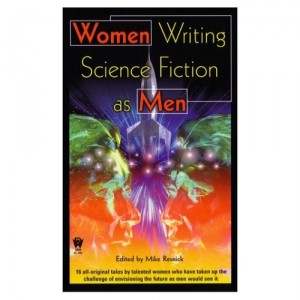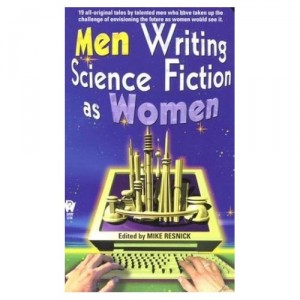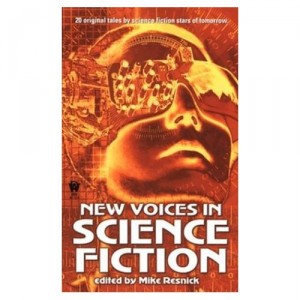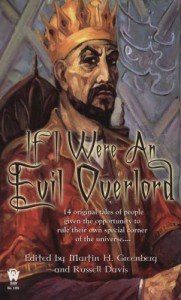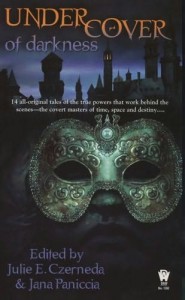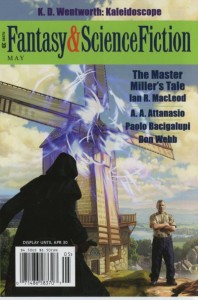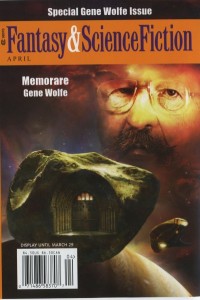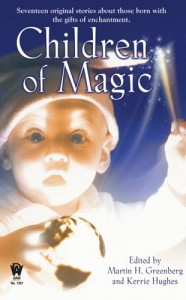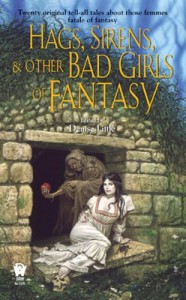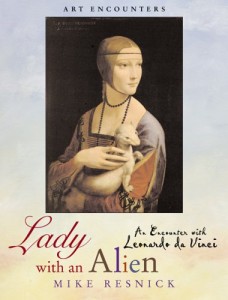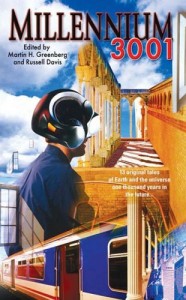 Back by popular demand, it’s the second installment in the fabulously speculative, occasionally baffling anthology series, brought to you by the same people who produce the SF/Fantasy poetry magazine, Mythic Delirium. Once again, Mike Allen has assembled a crack team of creative talents to put together a collection of short fiction and poetry. I can’t say it’s entirely unlike anything else you’ll find on the shelves, but his half-fiction/half-poetry format is somewhat unusual: too much fiction for the poetry lovers, and too much poetry for the fiction lovers, or so it might seem. But to dismiss Mythic 2 for either of those reasons might be hasty. Let’s look at what it has to offer.
Back by popular demand, it’s the second installment in the fabulously speculative, occasionally baffling anthology series, brought to you by the same people who produce the SF/Fantasy poetry magazine, Mythic Delirium. Once again, Mike Allen has assembled a crack team of creative talents to put together a collection of short fiction and poetry. I can’t say it’s entirely unlike anything else you’ll find on the shelves, but his half-fiction/half-poetry format is somewhat unusual: too much fiction for the poetry lovers, and too much poetry for the fiction lovers, or so it might seem. But to dismiss Mythic 2 for either of those reasons might be hasty. Let’s look at what it has to offer.
Charles Saplak’s “Visanna” is the intriguing story of a land in which everyone has multiple faces, appearing behind them in a time-lapse manner, one for every year they’ve lived. Then, one day, the protagonist meets people from another land, where their faces appear before them, one for every year they have left to live. It’s a fascinating concept, and a beautifully-told story that contains layers upon layers. Is it better to see exactly how one has evolved and changed or time, or to know what the future holds? Or are both options equally valid? This story certainly offers plenty to think about.
Catherynne M. Valente’s “Temnaya and the House of Books” takes its inspiration from Snow White and all those other fairy tales featuring wicked stepmothers, jealous mothers, dutiful and abused daughters, faithless fathers, and witches in the woods. A beautiful young woman discovers that somehow, she connects her birth mother and stepmother, and neither of them particularly care for her. Caught in the middle, what will Temnaya do to survive, and can she ever find acceptance? The sharp cruelty of many old fairy tales comes out in stark relief in this tale, which really does feel like something straight out of Grimm’s finest.
In “Moonstone,” by Erzebet YellowBoy, we see another fairy tale, with an equally dark twist. In this, a pair of curses exchanged between a wicked king and a lovely queen result in tragedy, when the king is banished and the queen’s infant daughter is stolen away. Here we see the dedication of a faithful mother, the lengths to which she must go to restore her family, and an unexpected twist straight out of Greek myth. It’s a provocative story with an ending both tragic and hopeful.
Though I’m not as much for the poetry as I am for the fiction, I’d be remiss if I didn’t mention my absolute favorite piece in this collection. Jo Walton’s “Post-Colonial Literature of the Elves” is a wickedly sly examination of how literature has brought the once-mighty elves of legend down in the world, from near-gods to flower fairies. Is it any wonder they’re a little bitter about their demotion and degradation?
Helena Bell’s “Bluebeard’s Second Wife” may be inspired by the fairy tale referenced in the title, but the sentiments expressed are those of any second spouse, and all too easy to sympathize with.
In “A Pinch of Salt” by Richard Parks, a father and son both come to terms, in their separate ways, over the recent disappearance of their wife/mother, a mermaid. It’s a smooth tale, but refreshingly honest and somewhat poignant, that looks at what love means to us. For some, it means sorrow, for some it means hope, and we’re almost all suckers for it in one way or another. It’s nice to see a protagonist that bluntly honest with himself and others, and it’s a shame the story ended when it did. I wouldn’t have minded seeing more of these characters and their world.
Ekaterina Sedia’s “Simargl and the Rowan Tree” is a curiously multi-cultural myth for the modern day, featuring the adventures of an absinthe addict who dies a fiery death and becomes Simargl, the guardian of heaven, charged with protecting the sun chariot each day. When his attempts to show mercy to a drowned girl in another part of the afterlife result in trouble, he has to fix things as best he can. Sedia draws from a number of influences to weave this story, and the end-result is something new and different, yet feeling familiar in its own way.
“The Wind-Catching Wizard” by Danny Adams, is the tale of a wizard’s bodyguard. Sworn to a loyalty that has become friendship over the years, this man must face the indisputable fact that his master is growing old and senile, and as a result, may pose a threat to the world. Now he must find a way to prevent disaster or tragedy, all the while adhering to his oath and his honor. The solution is clever, and unexpected, making for quite a fun, well-told story. I hope we’ll see more of this setting sometime.
These are only some of the varied offerings available in Mythic 2, and I’d have to say that for sheer entertainment value, this volume is worth picking up. The fiction it contains is just as good as what you’d find in any of the Year’s Best collections, and even for someone like me, who doesn’t get poetry most of the time, there’s still something there to be appreciated. All in all, I found more than enough in here to put Mythic 2 on my recommendation list.
Originally posted on SF Site, 2007

